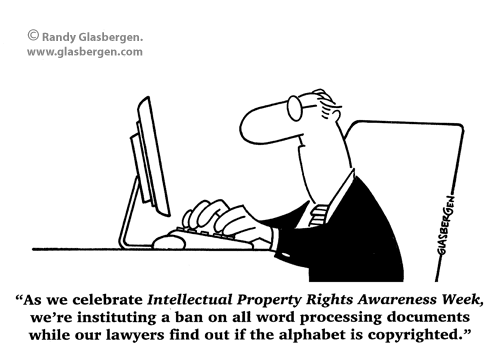Intellectual Property
Intellectual Property, or IP as it is abbreviated, is a very important topic. So what is Intellectual Property?
The diagram above shows some examples. Here are some more examples of Intellectual Property that specifically apply to the Electronics Design and Embedded Software Development:
- Patents
- Copyright
- Industrial design rights
- Plant varieties
- Trademarks
- Trade dress
- Trade secrets
Copyright applies to things such as:
- specification and requirements documents
- reports
- source code
- schematic designs
- PCB layouts
- Bills of Materials (BOMs)
- Product assembly and test instructions
- source code
- this blog
So a lot of the value created in a new Product Development project is bound up in the Intellectual Property generated.
Why this is important, is that many individuals and companies that offer Product Development services do not give you Intellectual Property Rights to the product you paid them to develop for you. We have picked up quite a few projects over the years where this lead to a toxic relationship between the client and the developer and they needed to go elsewhere.
Protecting your Intellectual Property
To protect your Intellectual Property the obvious steps are:
- Have a non-disclosure agreement in place prior to sharing any information with another party
- Ensure all staff and contractors have signed a non-disclosure agreement
- Check out patents early. Both to determine if you might be able to patent, and also to make sure you aren’t violating anyone else’s rights.
- Although Copyright vests automatically in Australia, do use Copyright notices
- Make everyone clear on what your Intellectual Property Policy is
- Register designs and trademarks
- Also purchase relevant domain names
Intellectual Property Policy
A question we are often asked is “What is your Intellectual Property Policy“?
Here is how we handle IP including our own which we can license into your project to save both time and cost:
- IP developed for you is owned exclusively by you and not used for any other purpose
- IP provided by you is owned by you and only used for the purpose it was provided for
- we will not share anybody else’s IP with you without their prior permission
- we will not share your IP with anyone else without your prior permission
- the non-exclusive license to our background IP is a single purchase at an agreed price and can be leveraged across multiple products
- where improvements in our background IP become available, they can be incorporated into your product and only the modification cost applies
- we regularly sign non-disclosure agreements and even have one of our own you can use if you don’t have a suitable one yourself
And the last part is usually about how we charge for all this. These are specific costs associated with generating your exclusive IP for a product. Where variants are then designed, only the adaptation or variation cost will be incurred. So for instance, changing from one NB-IoT vendor’s cellular modem to another modem from another vendor will only cost the PCB changes and code modification costs and would be expected to be substantially less cost than the initial implementation.
Another way to put all this, is that if you pay for it, you own it without any encumbrance.
Our aim is to ensure your success so it doesn’t make sense to make it difficult for you to own and exploit your own Intellectual Property.
And a little humour to finish off.
Successful Endeavours specialise in Electronics Design and Embedded Software Development, focusing on products that are intended to be Made In Australia. Ray Keefe has developed market leading electronics products in Australia for more than 30 years. This post is Copyright © 2017 Successful Endeavours Pty Ltd.





